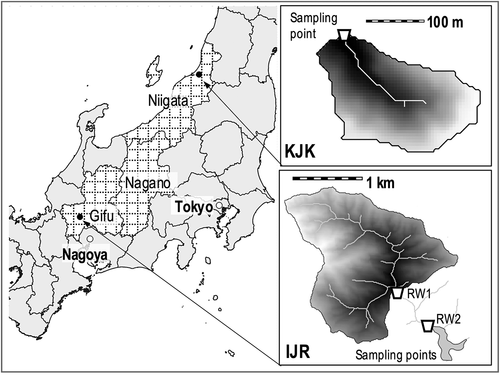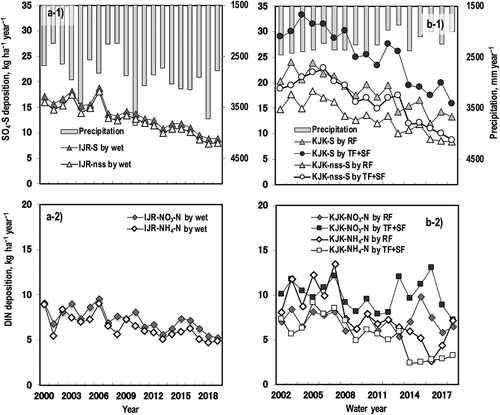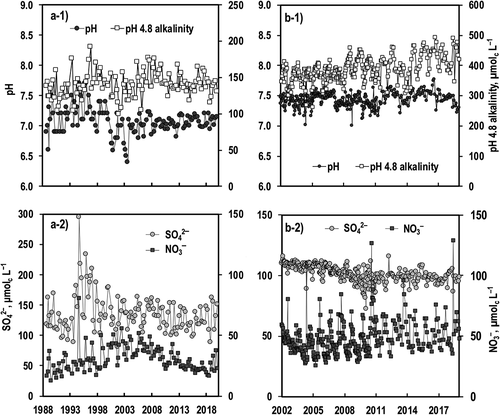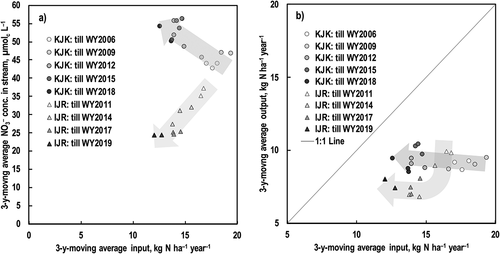Figures & data
Figure 1. Locations and images of Lake Ijira catchment (IJR) and Kajikawa catchment (KJK) in central Japan (after Kamisako et al. Citation2008; Sase et al. Citation2019). Stream water samples were collected at the outlet of catchment areas (shown as the sampling points). In the case of Lake Ijira catchment (IJR), stream water samples have been collected at RW1 and RW2 since 2007 and 1988, respectively.

Table 1. Site characteristics of two study catchments, Lake Ijira catchment on the Pacific side and Kajikawa catchment on the Sea of Japan side
Figure 2. Annual atmospheric fluxes of (1) SO4–sulfur (S) and/or non-sea salt (nss) SO4–S and (2) dissolved inorganic nitrogen (DIN) in (a) Lake Ijira catchment (IJR) and (b) Kajikawa catchment (KJK) (updated with the latest data after EANET Citation2020; Sase et al. Citation2021). Wet, fluxes by wet deposition at the Acid Deposition Monitoring Network in East Asia (EANET) site; RF, fluxes by rainfall outside canopy; TF+SF, fluxes by throughfall and stemflow.

Figure 3. Changes in (1) pH and pH 4.8 alkalinity and (2) concentrations of SO42– and NO3– in stream water in (a) Lake Ijira catchment (IJR) and (b) Kajikawa catchment (KJK) (drawn with the latest data after Sase et al. Citation2019, Citation2021). For IJR, the historical data since 1988 at RW2 are plotted.

Figure 4. Relationships (a) between the atmospheric N inputs and NO3– concentrations in stream water and (b) between the atmospheric N inputs and N outputs from ecosystems in Lake Ijira catchment (IJR) and Kajikawa catchment (KJK) (EANET Citation2021). Three-year-moving averages are plotted for several periods to show chronological changes. Water year (WY) in IJR, from November to October in the next year, e.g., WY 2019 in IJR, from November 2018 to October 2019 (after Sase et al. Citation2019); WY in KJK, from June to May in the next year, e.g., WY 2018 in KJK, from June 2018 to May 2019 (after Sase et al. Citation2021).

